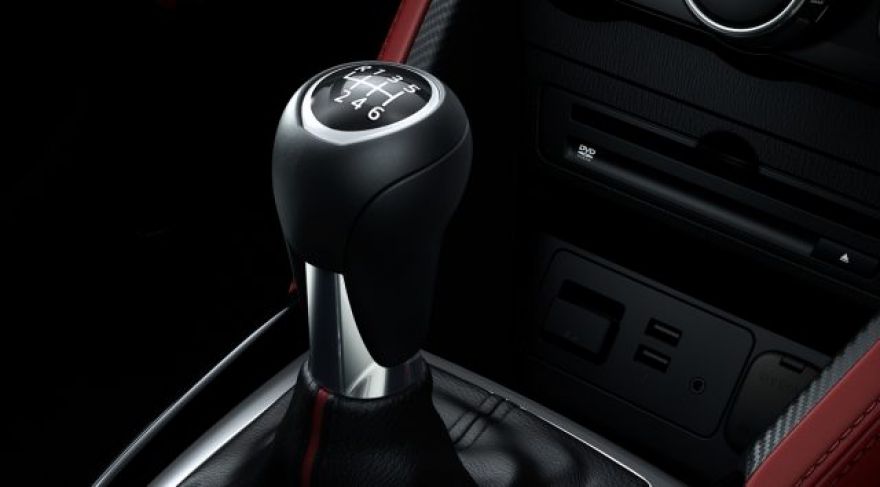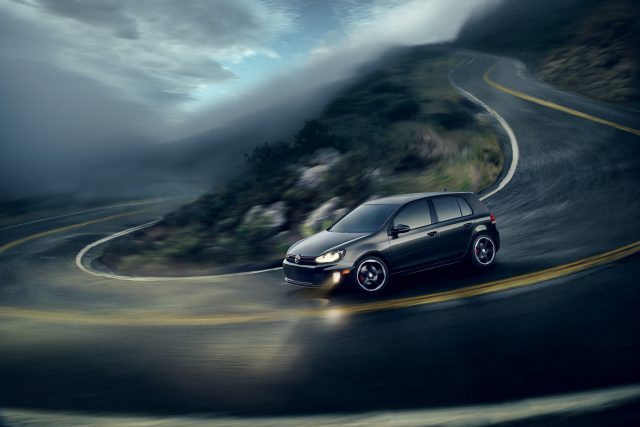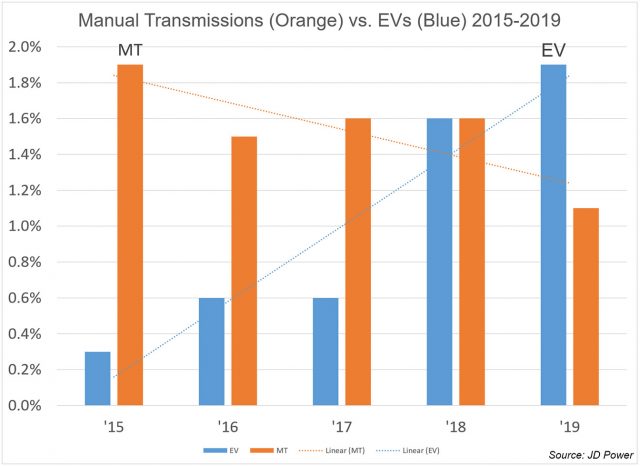
How About a $7,500 Federal Subsidy to Bring Back the Stick Shift?
Electric vehicles now outsell cars with manual transmissions by almost two to one. This piece of information from JD Power underscores what enthusiasts hate to acknowledge: The manual gearbox is slower to shift, doesn’t save gas, and sometimes burns more gas than a car with an automatic transmission or a double-clutch automated mechanical gearbox that has no clutch pedal.
This change was underscored most recently with the unveiling of the most iconic American sports car, the Chevrolet Corvette. It arrives next year with only an eight-speed dual-clutch automatic connecting the engine and the rear wheels. That’s a double blow to the Corvette traditionalist, who now has to cope with an engine mounted behind the driver.

VW GTI: Heel-and-toe, clutch, rev the engine, downshift third to second, be a hero on a winding road. Or these days, flick the paddle shifter on the left side of the steering wheel to drop down a gear and automatically rev-match the engine and drive wheels.
The reasons for moving from stick shift to automatic are many. The main one is convenience. It’s fun to shift gears by pressing a clutch pedal and rowing the console lever on a twisty country road. It’s not so much fun in rush hour traffic when you have to use the clutch 150 times shifting to neutral while covering the last two miles to New York City’s Lincoln Tunnel (I counted) at rush hour. More Americans are moving to urban areas where there’s more stop-and-go traffic.
Automatic transmissions are not significantly less reliable, unlike a generation ago. They typically match a manual transmission on fuel economy. Often they get better economy. Consider the 2019 Honda Fit:
- CVT (continuously variable transmission), 33 mpg city, 40 mpg highway, 36 mpg combined
- Automatic transmission, 31/36/33
- 6-speed manual, 29/36/31
If the manual gets worse fuel economy, that hurts the automaker’s overall CAFE rating, or corporate average fuel economy.
Everyone knows a diehard manual-transmission fanatic with time on his hands and a willingness to tell you how much better mileage he gets with the manual. It’s all anecdotal.
Automatics shift faster than the average driver and often faster than a skilled race driver. That typically means faster acceleration. Not in all cases.
If the car goes away from a manual transmission and if the automaker chooses to put the gear selector on the steering wheel, or dashboard, or even as a small knob on the console, that leaves room for the important things in life (to the average driver and passenger): cupholders, USB jacks, slots and cubbyholes for phones, sunglasses, keys and the other crap we carry with us.

By 2018, sales of electric vehicles in the US matched sales of cars with manual transmissions.
Research by JD Power shows the crossover point was in 2018. Manual-gearbox cars slipped from 1.8 percent of sales to 1.6 percent. Battery electric vehicles (BEVs), which have been on the market for about a decade, jumped from 0.3 percent share in 2015 to 1.8 percent in 2019 and to 1.9 percent for 2019 year-to-date. This is for retail sales only; Power says including fleet sales (which are even more heavily automatics) skews what the individual buyer does.
Power continually sifts data to find trends for its customers and for conferences it hosts, such as last month’s inaugural Auto Revolution confab in Las Vegas targeting analysts and demographers as well as car dealers and component suppliers.
If you want a stick shift car, now’s the time to buy. Car and Driver counted as of the beginning of the year, including the outgoing Corvette. There are also about a dozen crossovers and , CD says. Most are smaller vehicles, from Fiat, Honda, Jeep, Mitsubishi, and Subaru.
If you want to be among people who value manual gearboxes, leave the country. Manuals elsewhere account for more than four in 10 sales.
And in the US, a manual gearbox keeps your car out of the hands of joyrides and younger thieves. A car with a clutch is its own millennial anti-theft device.
Now read: